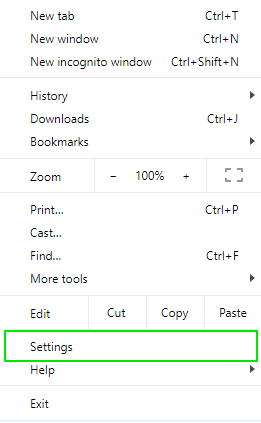Training Tips
![]()
Fixing Common Web Browser Issues
Have you ever noticed your browser not displaying website content properly? Maybe
a web page is missing an image, text, or maybe there's just a blank page. How about
an instance when you tried to click on a link or button that was supposed to bring
you to a new web page, but nothing happened? Sometimes it is completely out of your
hands and a website is under routine maintenance. Other times, your browser "cache"
could be the case. When you navigate the web, your web browser captures content as
you go. It captures content such as images, text, and other multimedia to help your
browser deliver the web pages to you as fast as possible. It's a great feature, but
sometimes your browser cache can get a little confused. There are a few ways you can
try to resolve this issue before feeling just as confused as your cache. The best
part is that it is really easy to do!
If your coworker is accessing or seeing some part of a web you are having problems
with, this is a good indication that the issue is cache related. At this point, we
want to clear your browser cache. This means that all of that older saved content
your browser has been holding onto will be deleted. This will help your browser by
giving it a fresh start! There's no need to stress over this removal of cached content.
Your saved bookmarks and passwords will not be deleted with the cache. You can think
of it as taking your browser to the car wash to remove unwanted dirt from the exterior.
Although this process is not dangerous in itself, it is good practice to make sure
you are pressing/not pressing the right buttons during this process. We want to keep
those bookmarks!
Here's a list of easy steps to follow when trying to clear browser cache in Chrome,
Firefox, and Internet Explorer.
-
Click on the three dashes in the top right corner.
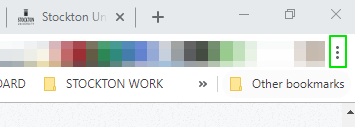
-
Click on settings in the menu.
-
Click on Privacy and security under the advanced drop down menu
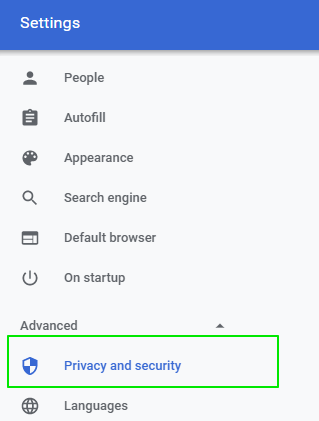
-
Scroll down until you see "Clear browsing data." Click that option.
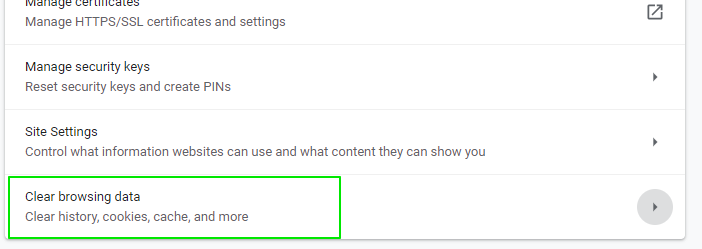
-
By default, "cached images and files" will be checked off. No need to select any other options. Then, select "clear data."
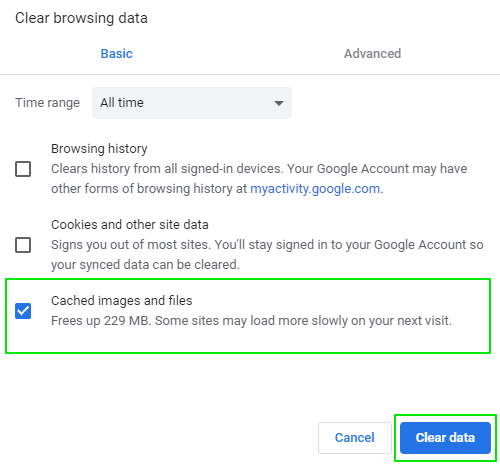
Your browser cache is now empty!
-
Click on the "hamburger bar" on the top right hand side of your window.
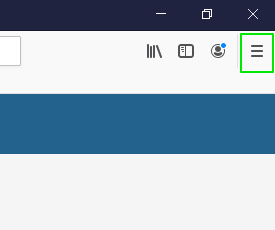
-
Next, click on "options"
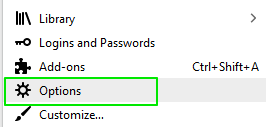
-
The, click "Privacy & Security"
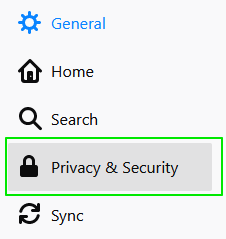
-
Next, click on "Clear Data..."

-
Lastly, uncheck "Cookies and Site Data" and click "clear"
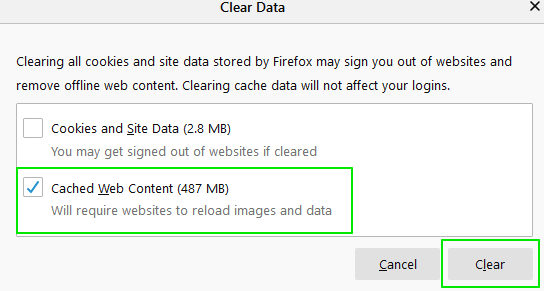
-
Your browser cache is now empty!
-
Click on the gear icon on the top right hand side. Select "safety," and then "Delete browsing history"
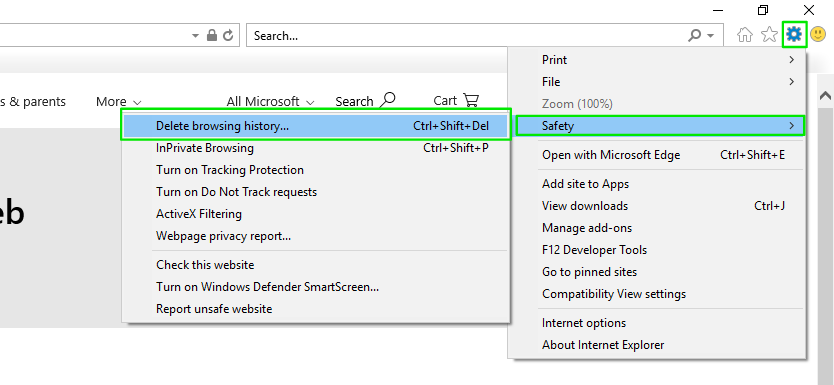
-
Leave just "Temporary Internet files and website files" selected. Then click "Delete."
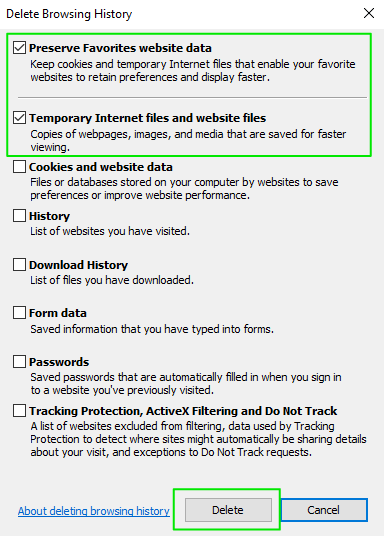
-
Your browser cache is now empty!
Sometimes clearing your cache doesn't work. Try some of the following methods to try and resolve some of your browser issues.
Shut down your browser completely and start fresh.
It’s a common refrain but this action often helps clear up small issues that can compound over time, and also frees up physical resources on your computer. Be sure to save any unfinished work before doing this!
- Windows
- Close each and every browser window you have open.
- Mac
- Use the keyboard shortcut cmd+Q to “Quit” the application. This command closes out of the browser entirely, whereas individually closing out browser windows would leave the application running in the background.
Remove extensions that you no longer use.
Extensions load with your browser and often take up significant resources. Taking unnecessary extensions out of the equation will make it easier for your browser to load pages, and in some cases make webpages more stable.
- Chrome
- At the top right, click the three-dot menu button. Next, click More tools > Extensions.
- On to the extension you want to remove, click Remove.
- Confirm by clicking Remove.
- Firefox
- Click the menu button and choose Add-ons. The Add-ons Manager tab will open.
- In the Add-ons Manager tab, select the Extensions or Themes panel.
- Select the add-on you wish to remove.
- Click the Remove button.
- Click Restart now if it pops up. Your tabs will be saved and restored after the restart.
Remove cookies.
Cookies are small records stored in your Browser that are primarily used to retain identity information for websites, such as logins and advertising information. These records are how sites you authenticate with keep you logged in for a period of time, so these can sometimes cause issues if you have multiple accounts for a single site. If a website you have to log in to is acting unusually, removing its cookies is often the first and last step in troubleshooting an issue.
- Chrome
- At the top right corner, click the three-dot menu button.
- Click More tools > Clear browsing data.
- At the top, choose a time range. To delete everything, select All time.
- Check the box next to “Cookies and other site data”.
- Click Clear data.
- Firefox
- Click the menu button and choose Preferences.
- Select the Privacy & Security panel and go to the Cookies and Site Data section.
- Click the “Manage Data” button. The Manage Cookies and Site Data dialog will appear.
- In the Search websites field, type the name of the site whose cookies you want to remove. Items that match your search will be displayed.
- To remove all cookies and storage data for the website, click Remove All Shown.
- To remove selected items, select an entry and click Remove Selected.
- Click Save Changes.
- In the Removing Cookies and Site Data confirmation dialog that opens, click OK.
